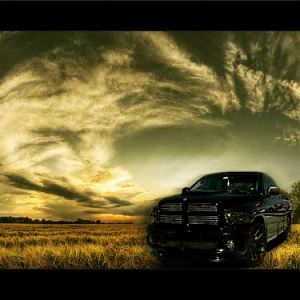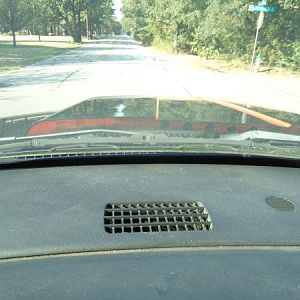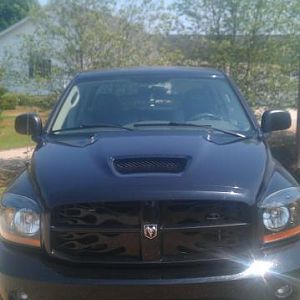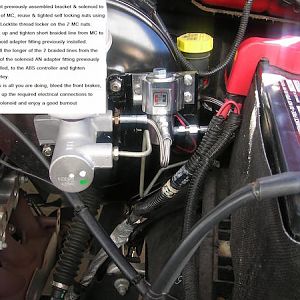Sorry about that. I had to run out to the truck to get the sheet. 387.1HP, 411.6 Ft/lbs. That's on a Dyno Dynamics Dynamometer.
You are using an out of date browser. It may not display this or other websites correctly.
You should upgrade or use an alternative browser.
You should upgrade or use an alternative browser.
Dyno Day Calgary AB
- Thread starter rottenronnie
- Start date
now get those headers on put the tune in and see what the difference is:rock:
Oh yes!! I'm home early next week. I'm taking my son to the Tom Petty concert and then I will have ten days to work on and tune the truck.:rock: :rock: :rock:
yellow446
Full Access Member
Hey ... good numbers not bad at all ... u need any help to work on your truck ill be in edmonton for 7 day statring on 15th ... bud ill not have much to do .... well have one car show on 19th and 20th but thats it ...i wouldnt midn taking a drive if u need hend ....
Hucksrt10 said:Nice shot of the magpie in the spokes of Ronnie"s Truck!!!:rock:
It was a trained magpie...
Last edited:
oldcolt said:Well that was fun!! It was my first time on a dyno, what a rush. My buddy's GT500 had 16 more HP than my 10.......I will have to fix that!! My A/F ratio needs some work and I will have to hit on Torrie for a new tune, but I can't wait to go back.


I'm glad you could make it out (albeit a bit late)
Well, early...but late...you know what I mean..
yellowfever#154
Full Access Member
oldcolt said:Sorry about that. I had to run out to the truck to get the sheet. 387.1HP, 411.6 Ft/lbs. That's on a Dyno Dynamics Dynamometer.
Ron, what percent does a guy add to that to match some of the other dynos around? Joe was talking 6% is that right? Even at 6% that pull was only 410 HP.
I know that the dyno numbers dont mean s*it, but its still kinda nice to know what your power level is relative to everyone elses on here.
yellowfever#154 said:Ron, what percent does a guy add to that to match some of the other dynos around? Joe was talking 6% is that right? Even at 6% that pull was only 410 HP.
I know that the dyno numbers dont mean s*it, but its still kinda nice to know what your power level is relative to everyone elses on here.
The Mustangs and the Dyno Dynamics are very close to the same in this area.
If I had to pick some numbers, I would say somewhere between 6 and 15% comparing those two brands and the Dynojets. This comes from SEVERAL vehicles that have run on both the Dynojet and then the Dyno Dynamics, sometimes less than 1 hour apart between pulls.
With OldColt's 2006 Reg. Cab last night on the Dyno Dynamics, his made 387 (and if you were to add 15% to that) it would equal 445 r.w.h.p. (on a Dynojet) which would seem consistent with his mods, in this case, as the bone stock Viper cars and stick trucks are all close to 425 on a Dynojet and I think you can add around 20 HP for a decent catback and intake like his truck had. I think my own truck picked up 18 wheel with a catback.
The auto trucks are typically 30 horsepower lower so, 395 on a Dynojet. I think mine was 389 bone stock on a Dynojet.
I make some changes at the dyno like Fstjack's throttle body, my under-drive pulley setup, more timing, different A/F, etc and as long as it shows positive gains, I'm happy.
Using the same dyno and operator is the way to go, I think. And once you have your all important baseline, you can improve from there.
I think it was Fstjack that said Mustangs were higher in his area than the Dynojets. But that is his area. So, it depends...
As you said, they are just numbers for tuning purposes. The track is the place to put it all to the test.
Ronnie
Last edited:
Ron, Brian and I were comparing data sheet's last night. His run was 4dgF lower than mine. Is there a gain in HP or does the dyno correct for this and give it a base temperature of 70F or so?
That silver box right by the screen (I don't know if you noticed it or not) was a weather station.oldcolt said:Ron, Brian and I were comparing data sheet's last night. His run was 4dgF lower than mine. Is there a gain in HP or does the dyno correct for this and give it a base temperature of 70F or so?
The dyno corrects for all weather conditions and keeps correcting power numbers using sea-level as the baseline. So even during the all-day sessions, the dyno will keep things in line.
Here is one of many articles..
http://wahiduddin.net/calc/cf.htm
PS- You'll have to bring the Colt in some time. It just HAS TO beat the Smart car...doesn't it??
I think the most anemic thing on there so far was a Geo Metro (3 cylinder, 1 liter N.A.).
Ronnie
Last edited:
We will have to get a pool going on the Colt's HP. I'm going with 40HP!!


oldcolt said:We will have to get a pool going on the Colt's HP. I'm going with 40HP!!


Is it an auto?
Any mods?
Bone stock 1600 4-speed. It has 27,000 miles. 

oldcolt said:Bone stock 1600 4-speed. It has 27,000 miles.

You have the top engine option then: 110 horsepower.
You would think at least 1/2 of it would reach the rear wheels, the car just isn't that long.
110hp???? Crap I was thinking more like 55hp at the crank!! From Road & Track, May 1973: 0-60 in 13.4, 1/4 mile in 19.3 @ 71mph!!
I have a NOS Hooker Header I could install.

I have a NOS Hooker Header I could install.
oldcolt said:110hp???? Crap I was thinking more like 55hp at the crank!! From Road & Track, May 1973: 0-60 in 13.4, 1/4 mile in 19.3 @ 71mph!!
I have a NOS Hooker Header I could install.

19.3 @ 71 m.p.h. Really ??
I had better revise my guesstimate on the r.w.h.p.
The Colt against the Smart car at Race City, that might be fun...
1.6 liter n.a. against a 0.83 liter turbo diesel- I'm guessing a 19.3 @ 70 m.p.h. with a good launch..
NOS= New Old Stock (That should confuse some people)
Last edited:
trubuilt
Full Access Member
If you add 15% to my 470 that would put me at 540 that seems pretty good for just bolt ons and a tune.rottenronnie said:The Mustangs and the Dyno Dynamics are very close to the same in this area.
If I had to pick some numbers, I would say somewhere between 6 and 15% comparing those two brands and the Dynojets. This comes from SEVERAL vehicles that have run on both the Dynojet and then the Dyno Dynamics, sometimes less than 1 hour apart between pulls.
With OldColt's 2006 Reg. Cab last night on the Dyno Dynamics, his made 387 (and if you were to add 15% to that) it would equal 445 r.w.h.p. (on a Dynojet) which would seem consistent with his mods, in this case, as the bone stock Viper cars and stick trucks are all close to 425 on a Dynojet and I think you can add around 20 HP for a decent catback and intake like his truck had. I think my own truck picked up 18 wheel with a catback.
The auto trucks are typically 30 horsepower lower so, 395 on a Dynojet. I think mine was 389 bone stock on a Dynojet.
I make some changes at the dyno like Fstjack's throttle body, my under-drive pulley setup, more timing, different A/F, etc and as long as it shows positive gains, I'm happy.
Using the same dyno and operator is the way to go, I think. And once you have your all important baseline, you can improve from there.
I think it was Fstjack that said Mustangs were higher in his area than the Dynojets. But that is his area. So, it depends...
As you said, they are just numbers for tuning purposes. The track is the place to put it all to the test.
Ronnie
It will be interesting to see if I pick up the 90hp I'm short on your's Andrew. I should be getting the headers/mids on next week.
how can there be so much difference between two properly calibrated dynos a motor that makes 500flbs of torque should make 500flbs on all dynos a flb is a flb 15% difference is a lot (75flbs) i would think if the dyno is calibrated and working good it would give you a more accurate measurement than that:dontknow:
68charger said:how can there be so much difference between two properly calibrated dynos a motor that makes 500flbs of torque should make 500flbs on all dynos a flb is a flb 15% difference is a lot (75flbs) i would think if the dyno is calibrated and working good it would give you a more accurate measurement than that:dontknow:
Remember, we are talking chassis dynos here, not engine dynos...
The Mustangs, Dyno Dynamics are both loading type dynos so the rollers aren't freewheeling, they are "braked" using an eddy-current electric motor. So load can be adjusted and used to simulate road conditions. Some like them more for tuning because they can be loaded. Regardless, they spit out a number.
The Dynojet uses free-wheeling rollers of a given weight so the purists argue there is accuracy in the simplicity because it takes x amount of power to spin rollers of a given weight to speed. They also spit out a number.
However, the Dynojet dyno was based (mathematically) on a mid 80's V-Max motorcycle which, as it turned out, had artificially high numbers from Yamaha. The Dynojet Engineers wanted to lower the output numbers coming off of the Dynojet but were voted down. And that is why it's numbers tend to be high.
Dynos are tuning tools first.
Hope this helps ©
Ronnie
Last edited:
Support Us
Become A Supporting Member Today!





